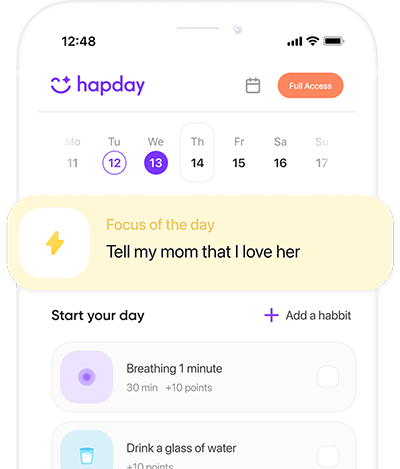Table of Contents
- The Dynamic Dance Between ASD and Anxiety
- Inside the Mind: Anxiety’s Role in ASD
- The Ripple Effect: Anxiety’s Impact on Life with ASD
- Spotting Anxiety in the ASD Experience
- A Game Plan for Managing Anxiety in ASD
- Empowering Through Support: The Role of Caregivers and Educators
- Conclusion
Autism Spectrum Disorder (ASD): An Introduction
Autism Spectrum Disorder (ASD) isn’t just a diagnosis; it represents a unique way of experiencing the world, complete with its own challenges and triumphs. At its core, ASD affects social skills, communication, and behavior, but for many, anxiety closely shadows these issues. According to the CDC, about 1 in 54 children in the U.S. is diagnosed with ASD, and a significant number of these individuals also grapple with anxiety. Understanding how these two conditions intersect can be key to enhancing the quality of life for those affected.
The Dynamic Dance Between ASD and Anxiety
Approximately 40% of people with ASD also experience anxiety disorders, a stark contrast to the 13% in the general population. This notable disparity is likely due to a complex blend of genetic, neurological, and environmental influences. Anxiety may manifest differently in those with ASD, often becoming entwined with the defining characteristics of autism itself.
Inside the Mind: Anxiety’s Role in ASD
Anxiety in ASD doesn’t always adhere to traditional norms. It often shows up as increased repetitive movements, heightened sensory sensitivities, or a pronounced avoidance of social interactions. These behaviors are not only signs of autism but also indicators of deeper-seated anxiety. For instance, a child with ASD might escalate in self-stimulatory behaviors, such as hand-flapping, during stressful episodes, leading observers to misunderstand their actions.
The Ripple Effect: Anxiety’s Impact on Life with ASD
Anxiety can intensify ASD’s core symptoms, creating a feedback loop that can interfere with learning, communication, and everyday life. This exacerbation can usher in additional challenges like aggression or sleep problems, further diminishing an individual’s well-being.
Research in the Journal of Autism and Developmental Disorders suggests that children facing both ASD and anxiety demonstrate more significant hurdles in daily life and social ability than those with only ASD. Addressing anxiety isn’t just beneficial—it’s essential for holistic development.
Spotting Anxiety in the ASD Experience
Diagnosing anxiety in someone with ASD can be like solving a puzzle, complicated by overlapping symptoms and communication barriers. Conventional assessment tools might fall short, leading to the need for methods tailored specifically to ASD.
Signs to Watch For
Since verbal articulation may be limited, caregivers and professionals must tune into behavioral clues:
- Escalated self-injury
- Increased irritability or aggression
- Fluctuations in eating or sleeping
- Withdrawal from favored activities
- Rigid adherence to routines
A Game Plan for Managing Anxiety in ASD
Handling anxiety in ASD involves an integrative approach, bringing together behavioral techniques, therapeutic interventions, and sometimes medication. Here’s how this multifaceted strategy can be applied:
1. Cognitive Behavioral Therapy (CBT)
CBT stands out as one of the most effective techniques for treating anxiety, although it often requires adaptation to fit the cognitive and communicative needs of those with ASD. Utilizing visuals, simplifying concepts, and incorporating special interests can make CBT more relatable and effective.
Tailoring CBT for ASD
Therapists might incorporate a child’s fascination, perhaps with trains, to metaphorically address social navigation and anxiety management.
2. Social Skills Training
Teaching social skills in a controlled, supportive environment can ease anxiety by boosting confidence in social engagements. Techniques like role-playing, video modeling, and rewarding positive behavior help solidify these skills.
3. Mindfulness and Relaxation Techniques
Practices including deep breathing, progressive muscle relaxation, and visualization can soothe anxiety. Studies in the Journal of Child and Family Studies highlight significant anxiety reduction through mindfulness in children with ASD.
4. Sensory Integration Therapy
With sensory processing challenges often fueling anxiety, sensory integration therapy aims to harmonize how individuals process sensory input. Crafting a sensory-friendly environment and specific activities can empower individuals to modulate their responses, easing anxiety levels.
5. Medication
Sometimes, medication becomes necessary to manage severe anxiety symptoms. Options like SSRIs may prove beneficial, but careful consideration of side effects and close collaboration with healthcare professionals is essential.
Empowering Through Support: The Role of Caregivers and Educators
Caregivers and educators are pivotal in the journey of managing anxiety in ASD. By constructing a nurturing environment and implementing anxiety-management strategies, they help individuals with ASD flourish.
Creating a World of Predictability
People with ASD often seek comfort in routine. By establishing structured environments and clear schedules, and by preparing for changes, caregivers and educators promote stability. Tools like visual schedules and social stories illustrate and guide daily routines.
Fostering Open Communication
Facilitating open, supportive dialogue ensures that feelings and concerns are heard and addressed. Encouraging expression, using visual aids, or alternative communication methods can aid understanding.
Building a Collaborative Network
Collaborating with a team—therapists, educators, healthcare providers—ensures that strategies align well with an individual’s needs. An interdisciplinary approach fosters comprehensive support.
Conclusion
Effectively managing anxiety in those with Autism Spectrum Disorder hinges on a blend of understanding, patience, and strategic intervention. By recognizing how anxiety uniquely manifests within this group, caregivers and professionals can tailor interventions that significantly enhance quality of life. This endeavor calls for patience, understanding, and collaboration, creating a landscape where individuals with ASD can genuinely thrive. Through dedicated efforts to address anxiety, we pave the way for a more inclusive, supportive world—one where individuals with ASD have the opportunity to reach their full potential and shine brightly in all areas of their lives.



This article really sheds light on the intricate relationship between ASD and anxiety. It’s alarming to see how much anxiety can amplify the challenges already faced by those with autism. I appreciate the practical strategies outlined, especially the focus on tailored CBT. It’s crucial to adapt therapies to meet individual needs!
Absolutely! The personalized approach makes such a difference. It’s interesting how something like a child’s fascination can be used as a tool in therapy. Have you seen this work in practice?
While I find the discussion around ASD and anxiety important, I worry that some of these strategies might oversimplify complex behaviors. Not every child will respond the same way, and it feels like there’s still a lot we don’t understand about their experiences.
What a wonderful read! It’s so heartwarming to see more awareness being raised about both ASD and anxiety. The emphasis on sensory integration therapy is particularly interesting—my friend has had great success with that approach for her child!
Yes! Sensory integration can make such a huge difference. It’s all about finding what works best for each individual, right?
@JoyfulExplorer99 Absolutely! Every child is unique, and sometimes it takes time to find the right strategy that resonates with them.
“Navigating anxiety in ASD sounds like an uphill battle sometimes. The mention of caregiver support is crucial—it’s really all about teamwork, isn’t it? And creating predictability helps not just individuals with ASD but everyone around them as well.”
@_AnxietyWarrior_ Yes! Predictability creates a sense of security for everyone involved!
I agree! A supportive network can truly change lives—both for those with ASD and their families.
The statistics presented are eye-opening! It’s shocking to realize how prevalent anxiety is among individuals with ASD compared to the general population. We need more awareness campaigns focusing on this intersection!
Totally agree! Raising awareness is key to better support systems for both conditions.
I love how this article emphasizes compassion alongside strategy! Managing anxiety isn’t just about techniques; it’s also about understanding and connecting on an emotional level.
Yes! Emotional connections can lead to breakthroughs in managing anxiety effectively.
Isn’t it ironic how something that helps us connect socially can also amplify anxiety? That paradox really makes you think about how we approach social skills training!
Exactly! Finding balance is key; it’s all about making these situations less intimidating.
This article brilliantly highlights the connection between ASD and anxiety. It’s refreshing to see such an insightful discussion on a topic that often gets overlooked. The statistics are eye-opening, and I appreciate the practical strategies suggested for managing anxiety in those with ASD. This kind of information can truly help families navigate their challenges better.
While the article presents some interesting points, it feels overly simplistic in addressing the complex nature of ASD and anxiety. Not every individual with ASD experiences anxiety in the same way, and blanket strategies may not work for everyone. More nuanced discussions are needed to genuinely aid those affected.
I found this article quite informative! The correlation between ASD and anxiety is something I’ve seen personally in friends who have children on the spectrum. It’s crucial to understand these overlaps to provide better support. The mention of tailored approaches like CBT gives hope for effective interventions.
I completely agree! Tailoring therapeutic approaches is essential, as each child’s experience is unique. It’s encouraging to know that there are adaptable methods available that can cater to specific needs.
Great point! I think more research into personalized strategies could lead to even better outcomes for individuals with both ASD and anxiety.
‘A Game Plan for Managing Anxiety’? More like a wish list! This article oversells solutions that might not be accessible or effective for many families facing these issues daily. Not everyone has access to specialized therapies or resources, which makes this feel somewhat out of touch.
‘Out of touch’ might be a bit harsh; however, I understand your frustration regarding accessibility issues. Perhaps future articles could focus more on grassroots initiatives or community-based support systems?